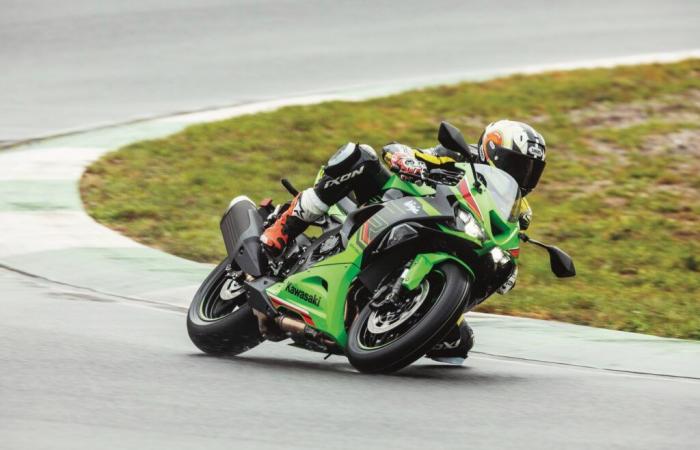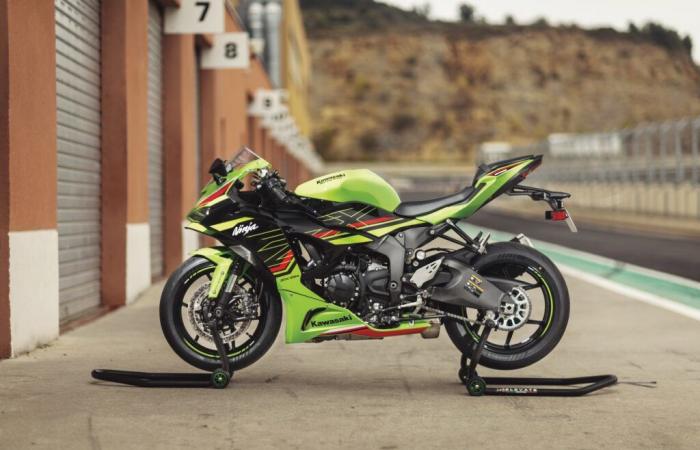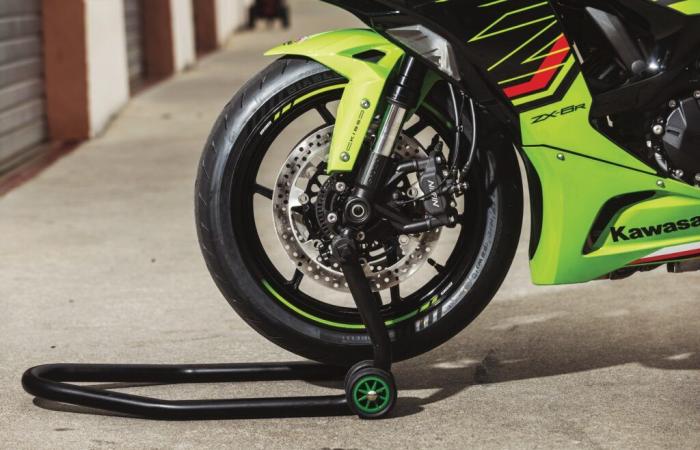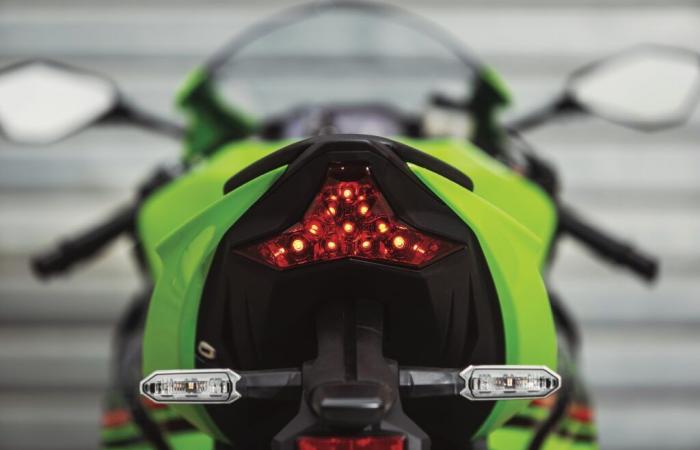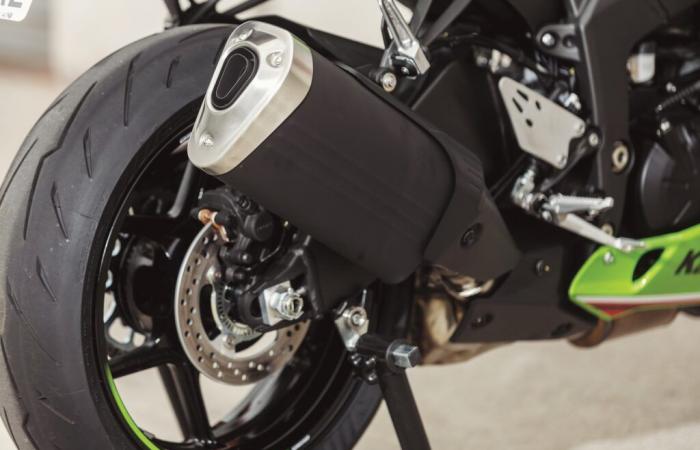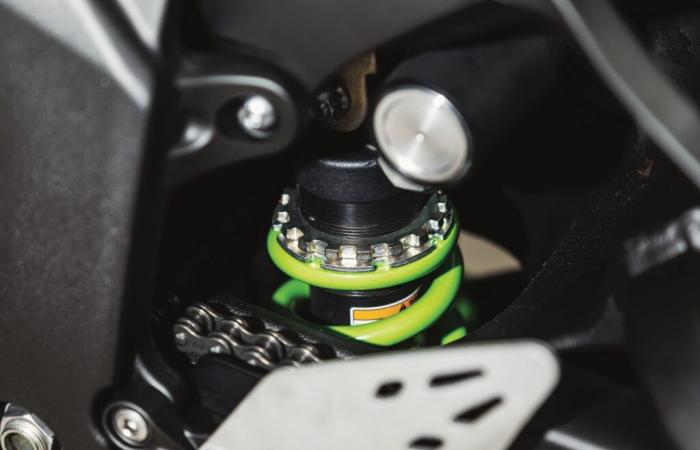Kawasaki will delight thrill seekers between the kerbs and fairing fans. The Greens are indeed returning with a Ninja 636 which lacks neither charm nor qualities. The icing on the cake is that it remains affordable. A look back at a bike that has everything it takes to become the standard bearer of a category in the midst of a renaissance.
A signed essay Stéphane Lacaze appeared in Moto 80 #887 – Photos Jean-François Muguet
The absence of a segment comprising medium-sized sports cars is an incomprehensible paradox in a motorcycle market that does not, however, lack “niches” that are far more improbable. For those who seek thrills, dream of vibrators or simply like fairings, the choice is very limited. Between overpriced 1000s, with ruinous maintenance and requiring real piloting skills to be exploited (other than in Rain mode – with the assistance at full throttle – of course) and initiation machines – certainly more and sexier (Yam R7, Kawa ZX-4RR, Triumph Daytona 660) – it’s the desert. And the Yamaha R6? No longer approved since the transition to the Euro5 standard, it only exists in the “Race” version. The Panigale V2? Serious ? Have you seen the price?! The Supersport 950? Still too expensive and not sporty enough. All that remains is a very successful Aprilia 660, but a little tight in terms of performance compared to what we knew at the time of the GSX-R 600, CBR600RR and other Daytona 675s.
Moreover, that Triumph does not offer a sports 800 (the brand has everything you need: engine, chassis, etc.) while it is involved in World Supersport and supplies the engines for the Moto2 category is as incomprehensible as it is. absence of KTM in the sector, when the Austrians invest fortunes in MotoGP. Fortunately, the arrival of an RC 990 is almost confirmed for next year, but given the inflation experienced by the orange brand’s models, we can fear the worst. However, the demand for efficient machines on the track and on the road, with respectable power, sexier than roadsters and offered at a reasonable price, exists. In any case, that’s what some manufacturers seem to think, as proven by the return of this ZX-6R, which has been accompanied by a Honda CBR for several months. Enough to bring back good memories to those who experienced the golden age of this type of machine, in the 2000s, and allow younger generations to discover new sensations.
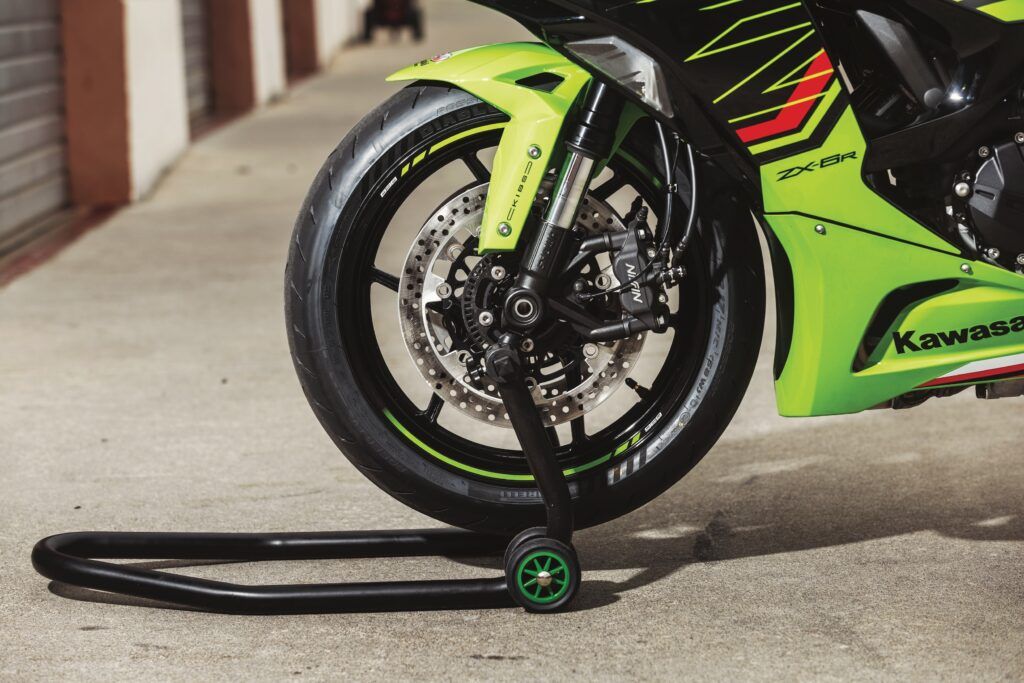
The happy medium
The first tours in a particularly hostile environment confirm the benefits of this type of machine. Let’s set the scene: we are on the Alès circuit, in the south of France, torrents of water fell on the region all night and, clearly, things are not going to get better. While the track is wet, I choose the ZX-6R for my first run, between 400 and 1000. The Ninja 636 indeed offers, on paper, the best assets for warming up in these delicate conditions. Its power (almost 130 hp with forced air intake) is sufficient to not constantly concentrate on choosing the right gear, while remaining reasonable. Same thing for its weight, less than 200 kg with full tanks, or its size. Besides, in the saddle, you quickly feel at home. The Kawa displays volumes close to ideal: the feet touch the ground without problem, the tank is thin enough for the knees to fit naturally and the bracelets tilt the bust “just enough” to have some feeling without it becoming torture for the wrists. The color digital dashboard – now common to many Kawa – is as readable as it is pleasing to the eye. On the other hand, navigating the menus, which changes depending on the brand’s models, requires a little time to get used to. Especially since a little research is necessary to configure the driving modes (Sport, Road, Rain or Rider) which combine engine maps and driving assistance. For the former, the choice is quickly made: it’s Low or Full, then the latter are more or less intrusive depending on the mode chosen. Note that with “Rider”, you can completely disconnect the traction control. As rain tires are required and the Alès track has quite phenomenal grip in these conditions, I choose optimism and set the mapping to Sport and not to Wet. The traction control will remain on 2 (there are 5 levels) and… that’s about all you can touch.
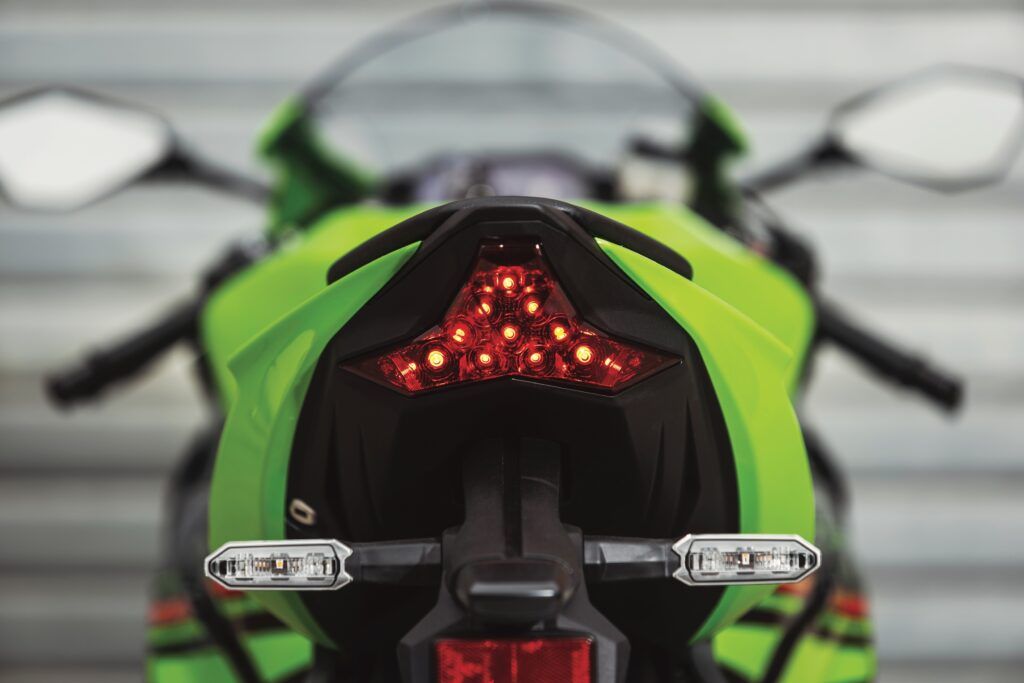
Starter, the 4-legged wakes up with a metallic meow, first and off we go. From the outset, what is noticeable is… that there is nothing remarkable. The machine steps aside to let the driver concentrate on steering. The behavior of the ZX 636 is natural, easy, balanced. The thrust is frankly pleasant without being frightening, the connection between the throttle handle and the rear tire is close to perfection and the injection jolts are absent. It must also be said that this famous handle still operates cables and is not entirely electronic. On the one hand, this deprives us of a downshift (the Quick Shifter only works to upshift, not to downshift), but on the other we find a pretty awesome throttle feeling. Focusing on the chassis, we see that the ZX-6R is reassuringly neutral. She follows the pilot’s orders without being too lively or resistant. It’s reassuring and quickly encourages you to increase your pace.
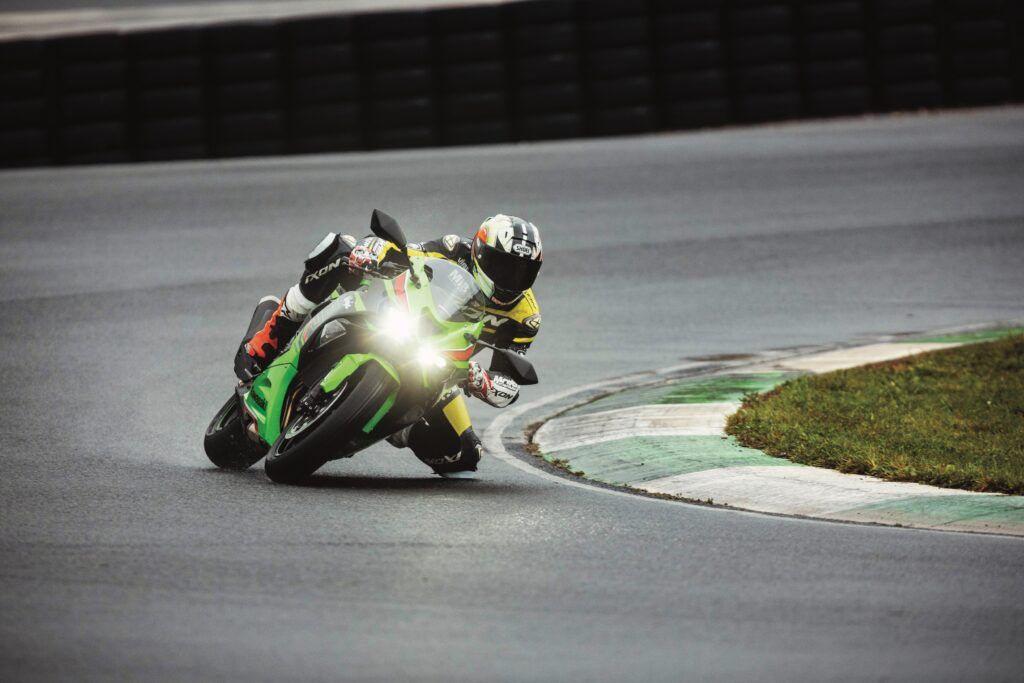
Singing in ze rain
I like the rain. Is this due to the kilometers covered in all conditions for work, to the numerous endurance races contested, where we are confronted with constantly changing situations, or simply to a particular feeling? Still, I don’t have any particular anxiety about riding in the wet. I even take a certain perverse pleasure in it. Especially with Bridgestone rain tires whose performance I know. As a result, the rhythm comes very quickly and I take great pleasure in overtaking my little friends who are still in the “discovery” phase. The 636 helps a lot in this exercise, because it is disconcertingly easy in all phases of piloting. The acceleration is ideal: it pushes hard, but without brutality, so as to preserve traction. Moreover, the traction control will remain silent throughout the day with it (it will be a completely different story riding the ZX-10RR, also available during this day!).
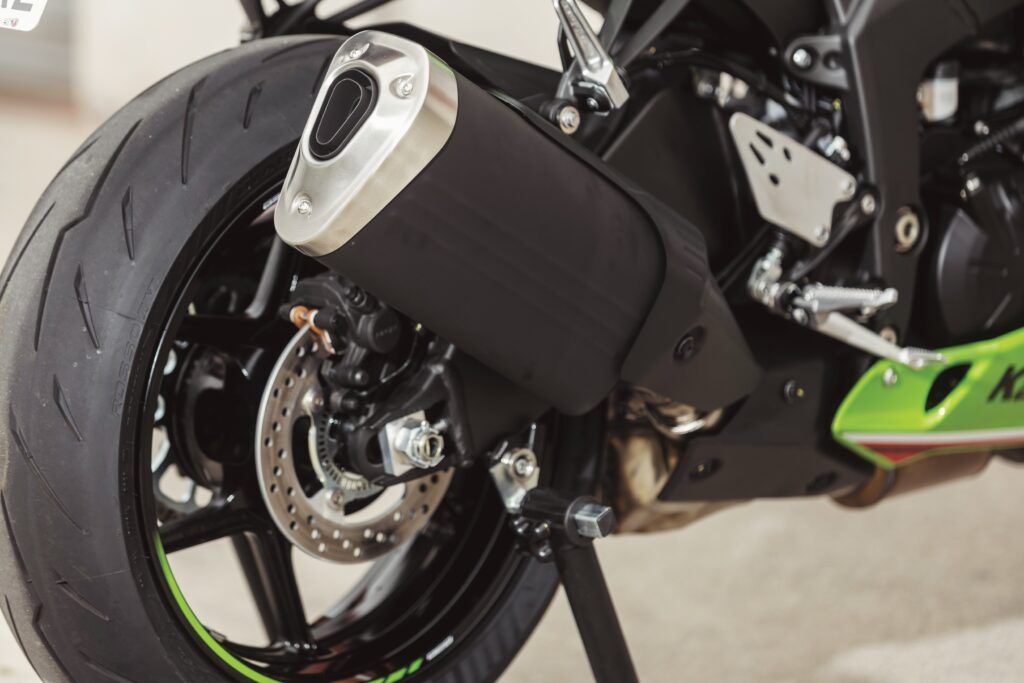
When braking, the reduced weight, the absence of inertia and the quality of the system provide both effective slowing down, but also all the sensations necessary to pull hard on the lever while knowing exactly where you are in terms of grip. . A quality that we owe to the monobloc calipers, but also to the radial pump master cylinder. Finally, moving from the 636 to its sisters (ZX-4RR and ZX-10R and RR), you just have to get used to using the clutch to drop gears when the others have a very effective downshift. For the rest, it’s flawless. Thanks to the rigor of the aluminum perimeter frame (which is becoming increasingly rare, replaced by tubular trellises or monocoques) the front axle inspires enormous confidence, it is both devilishly agile and precise. , while remaining reassuring, including sudden changes of direction. The driving position allows perfect control and the laps follow one another without fatigue, but with constant pleasure. Apart from regretting a slightly higher bubble which could offer better protection, there is not much to criticize it. The suspensions work very well in these conditions, the fork (a Showa SFF-BP fully adjustable, both in preload and hydraulics) sinks progressively, sending back a lot of information on the grip available, while the shock absorber (designed Showa also, also fully adjustable) allows all the power to be transferred to the ground. The mechanics, for their part, never cease to surprise. Both by her good will when it comes to resuming at mid-range and by the enthusiasm she has when she is asked to rush towards the red zone. It must also be said that, since the disappearance of the old model from our catalog during the transition to the Euro5 standard, it has continued to be produced for other markets and the engineers have not stood still.
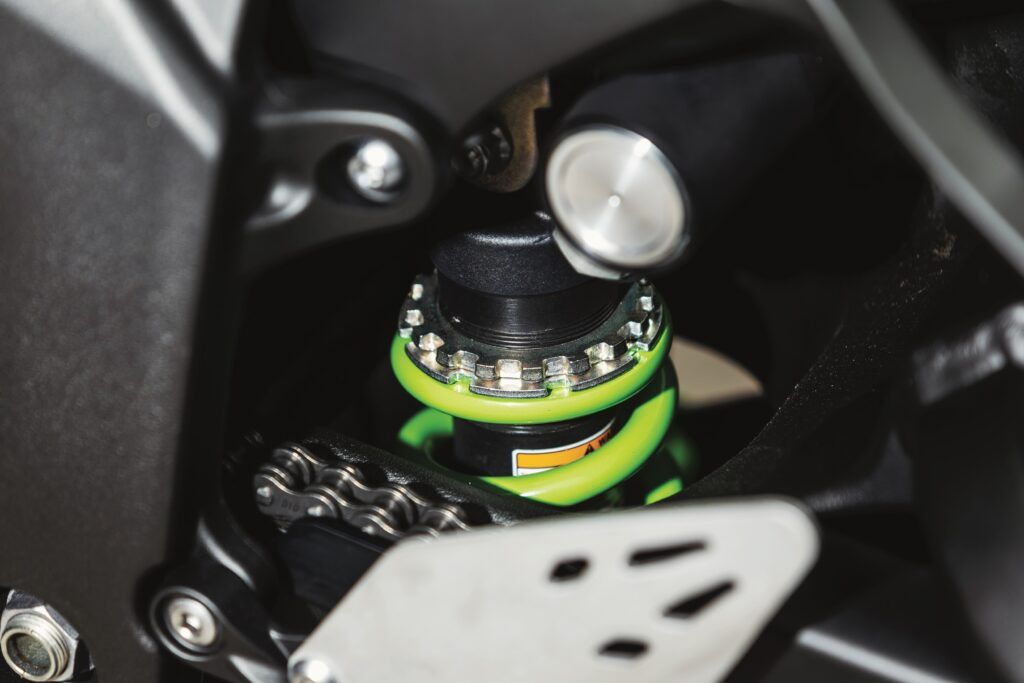
In addition to the look, now inspired by its big sister ZX-10R and a modern and connected dashboard (via the dedicated “Rideology the app”), the little sports car has undergone a facelift. This involves now round brake discs (the previous ones were of the “petal” type) and the adoption of more efficient electronics (previously there were no driving modes, no different engine maps, no power control). traction). The exhaust line has also been revised, the ABS benefits from a more recent version (and has proven to be very discreet in its interventions), and the internal developments of the engine now allow it to meet anti-pollution standards while remaining efficient.
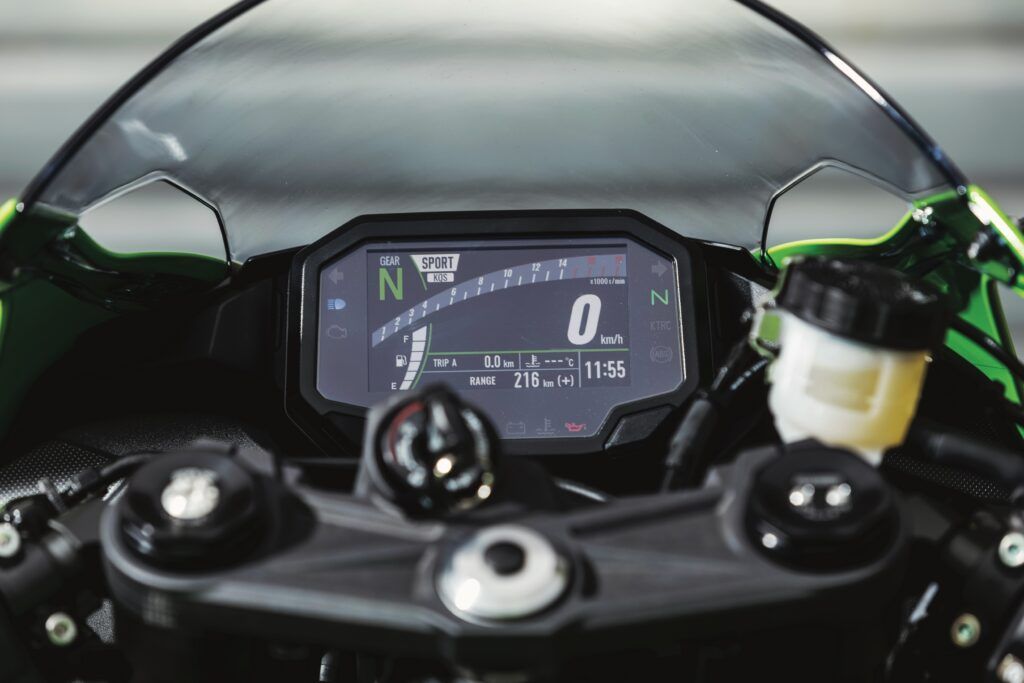
Conclusion
Without reinventing the wheel, the ZX-6R reminds us how the Supersport category is the most suited to ordinary people. With it, we have butter (power, sensations, efficiency), butter money (ease of use, versatility) and even a date with the creamer (thanks to the money saved with a reasonable bill). On the road, it will provide enormous confidence thanks to high-performance suspensions and reduced inertia which make it particularly agile. The only small regret will come from the original tire fitting, the Dunlop Roadsport 2 not really up to the performance level of the machine, which we would have happily exchanged for Sportsmart TTs. In short, Kawa is making a winning comeback and this bike should delight all thrill-seekers, between the curbs and on a daily basis, who don’t want to give up on driving pleasure, nor get angry with their banker.

